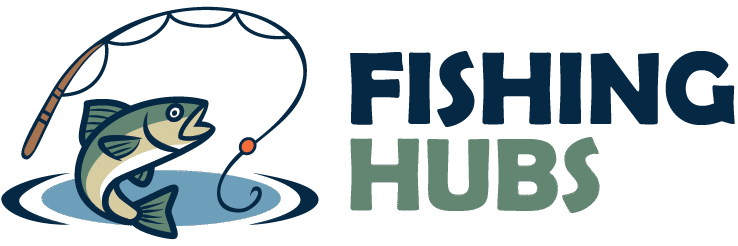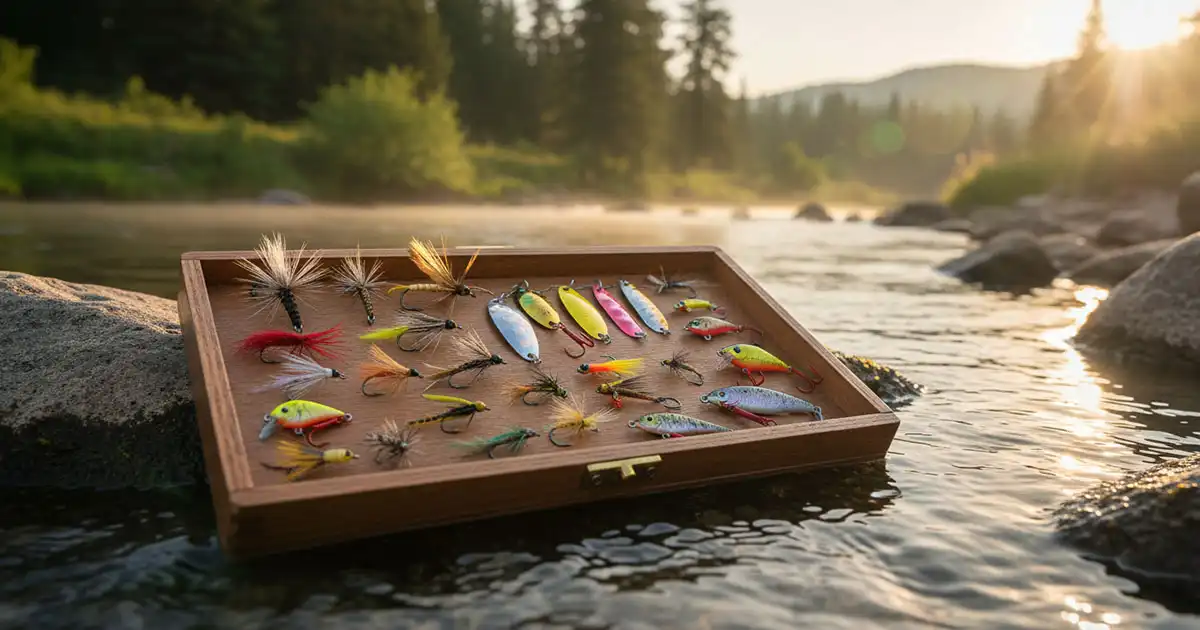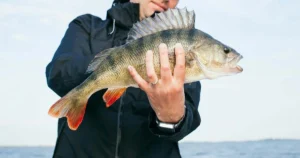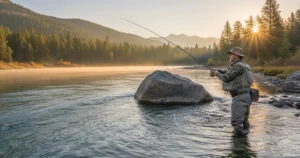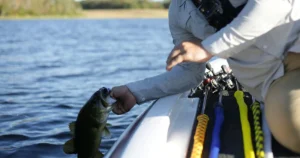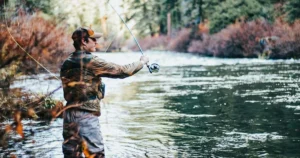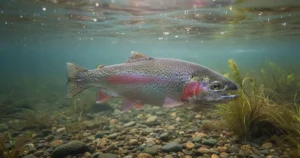A How-To Guide to Trout Fishing Lures, Baits, and Flies
Table of Contents
To catch a trout, you need to think like a trout. And thinking like a trout means understanding what they eat. The best time to fish for trout isn’t just about the clock; it’s about presenting the right food at the right time. Trout have a varied diet, and what they’re willing to bite on can change from one moment to the next. This guide will walk you through the most effective natural baits, lures, and flies for catching these beautiful fish.
The Best Natural Baits for Trout
Natural baits are a classic choice and are often incredibly effective, especially for stocked trout or in high-pressure fishing areas.
Worms: The All-Time Classic
You can never go wrong with a classic nightcrawler or a red worm. They are a staple of a trout’s diet and their scent and movement can be irresistible.
- How to Use Them: Hook the worm once or twice so it can wiggle naturally in the water. Use a small split shot to get it down to the fish’s depth.
Salmon Eggs: The Colorful Attraction
Salmon or trout eggs are a favorite bait, especially during spawning seasons. The vibrant colors and scent can trigger an aggressive strike from a hungry trout.
- How to Use Them: Use a small single egg hook and thread one or two eggs on. The eggs can be used on their own or in a “spawn sack.”
Corn: The Stocked Trout’s Favorite
While some anglers consider it controversial, corn is an incredibly effective bait for recently stocked trout. The bright color and unique scent make it stand out.
- How to Use It: Simply thread a few kernels onto a small hook. It’s best to fish it off the bottom with a small weight to keep it in place.
The Best Lures for Trout
Lures are a great way to actively search for fish and cover a lot of water. They mimic the erratic movements of baitfish or insects, triggering a predatory strike.
Spinners: The Flash and Vibration
In-line spinners like the Mepps Aglia or Panther Martin are a must-have for any trout angler. The spinning blade creates flash and vibration that drives trout wild.
- How to Use Them: Cast a spinner upstream and retrieve it at a steady pace. Vary your retrieve speed until you find what the trout are biting on.
Spoons: The Wobbling Action
Spoons, such as the Kastmaster or Little Cleo, have a distinctive wobbling action that imitates an injured baitfish. They are excellent for casting long distances and in still water.
- How to Use Them: Cast the spoon out and let it flutter down. Retrieve it in a jerky, stop-and-go motion to mimic a dying fish.
Jigs: The Subtlety of a Jig
Small jigs, often tipped with a soft plastic tail, are a versatile and effective lure. They can be worked slowly along the bottom or jigged to imitate a struggling insect.
- How to Use Them: Cast the jig and let it sink. Gently lift and drop your rod tip to make the jig “dance” on the bottom.
The Best Flies for Trout
Fly fishing is an art, and choosing the right fly is a science. Flies are designed to perfectly mimic the various life stages of the insects that make up a trout’s diet.
Dry Flies: The Surface Action
Dry flies imitate adult insects that are floating on the water’s surface. A trout rising to a dry fly is one of the most exciting experiences in fishing.
- Popular Patterns: Elk Hair Caddis, Adams, and Parachute Adams.
Nymphs: The Underwater Workhorse
Nymphs imitate the larval stage of aquatic insects, which is where a majority of a trout’s diet comes from.
- Popular Patterns: Pheasant Tail, Hare’s Ear, and Prince Nymph.
Streamers: The Big Meal
Streamers are larger flies that imitate baitfish, leeches, or other larger prey. They are a great way to target bigger, more aggressive trout.
- Popular Patterns: Woolly Bugger and Clouser Minnow.
Your gear is as important as your bait. When it comes to the best fishing poles, you’ll find a huge variety, from fly rods to spinning rods. For a beginner, a good quality spinning rod from one of the top fishing rod brands like Ugly Stik or St. Croix is a great place to start. If you’re looking for a fly rod, brands like Orvis and Sage are renowned for their quality.
Key Takeaways
- Match your bait to the conditions. Natural baits are great for stocked trout, while lures and flies work well for wild fish.
- Vary your retrieve to find what the trout are biting on.
- Flies are designed to mimic a specific food source, so “matching the hatch” is crucial.
- The right rod and reel can make any bait more effective.
FAQ
Q: Is the best time to fish for trout in the rain? A: Yes! A light, steady rain can be a great time to fish. The rain breaks up the surface of the water, making it harder for trout to see you. It also washes insects and other food sources into the water, triggering a feeding response.
Q: What are the best fishing poles for saltwater fishing? A: While this guide focuses on trout, it’s worth noting that best saltwater fishing rods are typically heavier and more durable than freshwater rods. They are designed to withstand the corrosive effects of saltwater and handle larger, more powerful fish.
Q: Can a beginner use a fly rod? A: Absolutely. While fly fishing has a reputation for being difficult, there are many excellent resources and best beginner fishing rod combos available that make it easy to get started. Brands like Orvis and Redington offer fantastic entry-level setups.
Conclusion
Whether you’re using a juicy worm, a flashy spinner, or a meticulously crafted fly, understanding the right bait for the job is essential. Trout are opportunistic feeders, but they can also be picky. By having a variety of options in your tackle box and knowing when to use them, you’ll be well on your way to a successful day on the water.
